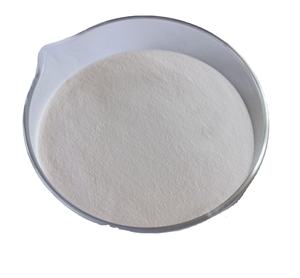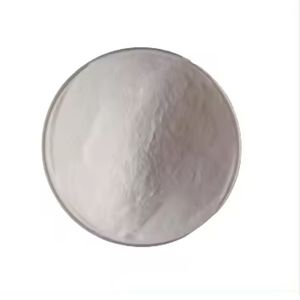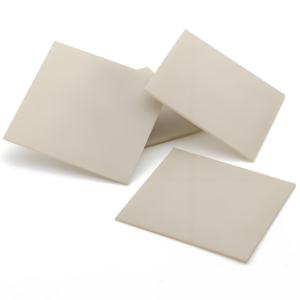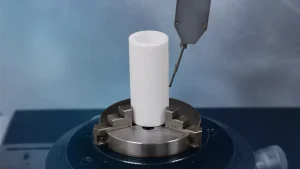Professional industry ceramic supplier, silicon nitride, silicon carbide, aluminum nitride and any other kinds of ceramics.
1. Introduction
In a major development just 24 hours ago, Saint-Gobain announced a breakthrough in sintered silicon carbide (SiC) technology that significantly extends the lifespan of industrial crucibles used in aluminum and copper melting—reducing downtime by up to 30%. This innovation underscores the growing reliance on silicon carbide crucibles in metal casting and semiconductor manufacturing, where thermal stability and chemical inertness are non-negotiable.

Despite the buzz, confusion persists—especially online—where products like ‘silicon carbide ceramic dinner plates’ or ‘baking dishes’ flood e-commerce platforms. True silicon carbide is an advanced ceramic engineered for extreme environments, not kitchenware. In this article, we cut through the noise with a focused, technical comparison of real silicon carbide crucibles versus competing materials.
2. What Makes a Silicon Carbide Crucible Unique?
A silicon carbide crucible is a high-performance container made from SiC—a compound of silicon and carbon known for its exceptional hardness, thermal conductivity, and resistance to thermal shock. Unlike traditional clay or graphite crucibles, SiC versions maintain structural integrity above 1,600°C and resist corrosion from molten metals like aluminum, zinc, and even reactive alloys.
- High thermal conductivity (up to 120 W/m·K) enables rapid, uniform heating
- Low thermal expansion minimizes cracking during temperature cycling
- Chemically inert against most slags and fluxes used in foundries
These traits make silicon carbide crucibles ideal for induction furnaces, precious metal refining, and laboratory applications requiring contamination-free melting.
3. Silicon Carbide vs. Zirconia and Alumina Crucibles

While zirconia (ZrO₂) and alumina (Al₂O₃) crucibles are common alternatives, they serve different niches. Zirconia crucibles excel in ultra-high-purity applications (e.g., rare earth melting) due to their near-zero reactivity, but they’re brittle and expensive. Alumina crucibles offer good chemical resistance and are cost-effective but suffer from lower thermal shock resistance compared to SiC.
Silicon carbide strikes a balance: it’s tougher than zirconia, more thermally conductive than alumina, and often more economical for high-volume operations. However, SiC can oxidize in air above 1,400°C unless protected by coatings—something zirconia doesn’t face.
For foundries processing non-ferrous metals daily, silicon carbide crucibles typically outperform both in longevity and energy efficiency.
4. Boron Carbide vs. Silicon Carbide: Not Interchangeable
A frequent point of confusion is boron carbide vs silicon carbide. Though both are ultra-hard ceramics, their applications diverge sharply. Boron carbide (B₄C) is primarily used in armor plating and neutron absorbers due to its extreme hardness and low density—but it’s far more expensive and less thermally conductive than SiC.
Crucibles made from boron carbide are rare and impractical for most industrial melting tasks. Silicon carbide remains the go-to for crucibles, burner nozzles, bricks, and tubes in high-heat environments. Meanwhile, boron carbide shines in ballistic protection, not metallurgy.

5. Silicon Nitride: A Complementary Advanced Ceramic
Silicon nitride (Si₃N₄) is another advanced ceramic often mentioned alongside SiC. While silicon nitride crucible factories do exist, Si₃N₄ is prized more for its fracture toughness and performance under mechanical stress—making it ideal for bearings, cutting tools, and custom heat shields.
Unlike silicon carbide, silicon nitride has lower thermal conductivity but superior resistance to oxidation at very high temperatures. It’s also used in specialized components like silicon nitride rings and insulating plates in aerospace systems. However, for standard crucible duties involving molten metal, silicon carbide remains dominant due to cost and manufacturability.
Note: Products marketed as ‘silicon carbide ceramic baking dish’ or ‘dinner plates’ almost never contain actual SiC. These are typically glazed porcelain or stoneware with misleading branding. Real silicon carbide is black, extremely hard, and not food-safe in raw form.
6. Beyond Crucibles: Other Industrial Uses of Silicon Carbide Ceramics
The versatility of silicon carbide extends far beyond crucibles. You’ll find it in:
- RBSiC silicon carbide tile blocks for kiln linings
- Silicon carbide ceramic columns and rings for filtration and support structures
- Silicon carbide burner nozzles in glass and steel industries
- Silicon carbide tubes for thermocouple protection and furnace atmospheres
- Silicon carbide grinding discs and sanding media for precision machining
These components leverage SiC’s durability in corrosive, high-wear, or high-temperature settings—proving why it’s a cornerstone of advanced ceramics manufacturing.
7. Conclusion
Silicon carbide crucibles aren’t just another ceramic vessel—they’re engineered solutions for demanding thermal processes. When compared to zirconia, alumina, boron carbide, or silicon nitride, SiC offers the best blend of thermal performance, mechanical strength, and cost-efficiency for most industrial melting applications. As innovations like Saint-Gobain’s new sintering technique roll out, expect even wider adoption across foundries, labs, and clean-energy sectors. Just remember: if it’s sold as dinnerware, it’s probably not real silicon carbide.
Our Website founded on October 17, 2012, is a high-tech enterprise committed to the research and development, production, processing, sales and technical services of ceramic relative materials such as 5. Our products includes but not limited to Boron Carbide Ceramic Products, Boron Nitride Ceramic Products, Silicon Carbide Ceramic Products, Silicon Nitride Ceramic Products, Zirconium Dioxide Ceramic Products, etc. If you are interested, please feel free to contact us.




